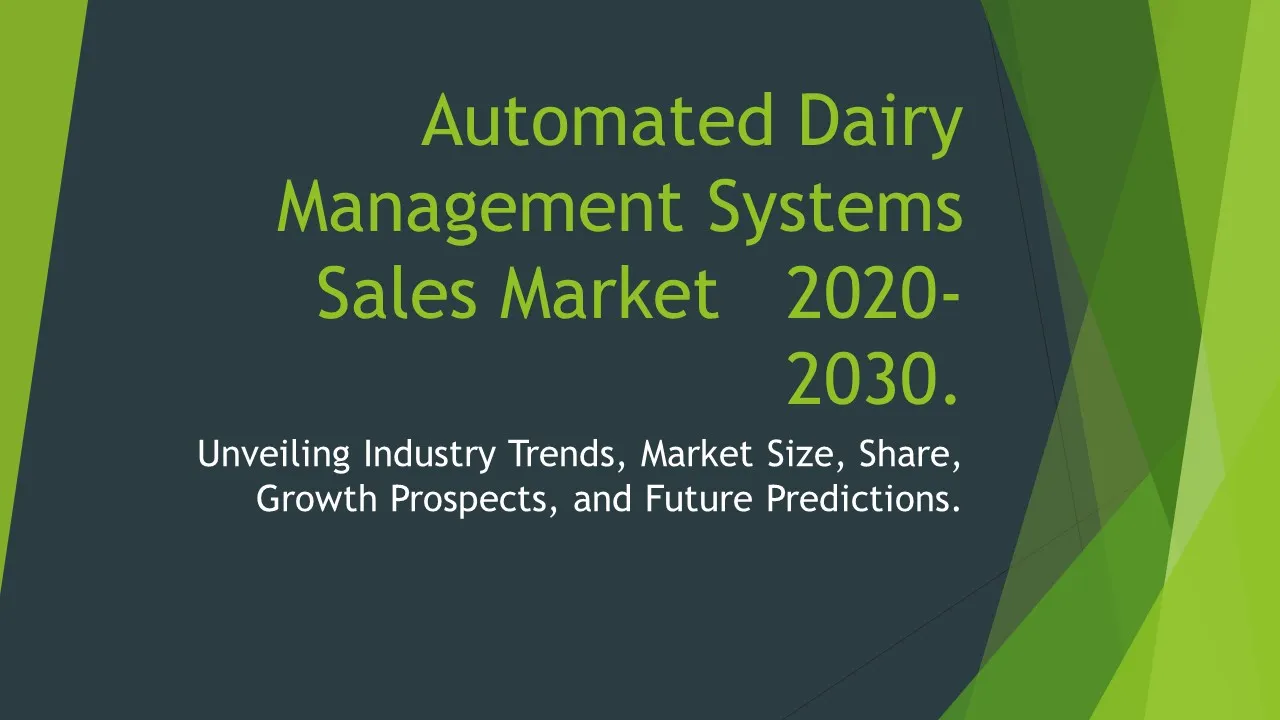IPM Pheromones
IPM Pheromones Market Segments - by Product Type (Pheromone Traps, Pheromone Lures, Pheromone Dispensers, Pheromone Mating Disruption, Pheromone Monitoring), Application (Agriculture, Forestry, Horticulture, Stored Products, Livestock), Distribution Channel (Online Stores, Agricultural Co-operatives, Direct Sales, Retail Stores, Government Agencies), Ingredient Type (Sex Pheromones, Aggregation Pheromones, Alarm Pheromones, Trail Pheromones, Kairomones), and Region (North America, Europe, Asia Pacific, Latin America, Middle East & Africa) - Global Industry Analysis, Growth, Share, Size, Trends, and Forecast 2025-2035
- Report Preview
- Table Of Content
- Segments
- Methodology
IPM Pheromones Market Outlook
The global IPM Pheromones market is anticipated to reach approximately USD 2.5 billion by 2035, growing at a Compound Annual Growth Rate (CAGR) of 11.5% during the forecast period from 2025 to 2035. This growth is primarily driven by the increasing adoption of Integrated Pest Management (IPM) practices in agriculture, aimed at reducing reliance on chemical pesticides and promoting sustainable agricultural practices. The rising awareness of environmental sustainability and the harmful effects of chemical pesticides on human health and biodiversity are also contributing to the growth of this market. Furthermore, advancements in pheromone technology and increasing investments in agricultural research are expected to foster innovation and expand the application of pheromones in various sectors. The demand for organic produce and the stringent government regulations regarding pesticide use are additionally propelling the IPM Pheromones market.
Growth Factor of the Market
The growth of the IPM Pheromones market is significantly influenced by various factors that together promote the expansion of this sector. One of the key drivers is the increasing global population, which necessitates higher agricultural productivity and the need for innovative pest control solutions. As farmers face mounting pressure to maximize crop yields while minimizing environmental impact, the adoption of pheromones as a pest management tool becomes increasingly appealing. Additionally, the growing trend towards organic farming practices has led to heightened interest in natural pest control methods, further boosting the demand for pheromones. Moreover, government initiatives and policies aimed at promoting sustainable agricultural practices have also catalyzed the market's growth. The rising incidence of pest resistance to conventional pesticides has compelled agricultural practitioners to seek alternative pest management solutions, making pheromones a viable option for many. Furthermore, increasing awareness regarding the benefits of pheromone application, including cost-effectiveness and minimal non-target effects, plays a crucial role in driving market growth.
Key Highlights of the Market
- The IPM Pheromones market is expected to grow at a CAGR of 11.5% from 2025 to 2035.
- Increasing demand for sustainable agricultural practices is driving the adoption of pheromones.
- Technological advancements in pheromone formulation and application techniques are enhancing market potential.
- Government regulations favoring organic farming and reduced pesticide use are supporting the market growth.
- Asia Pacific is projected to witness the highest growth rate due to rising agricultural activities and population pressure.
By Product Type
Pheromone Traps:
Pheromone traps utilize specific pheromones to lure and capture target pests, making them an essential tool for monitoring and controlling pest populations. These traps are designed to attract male insects, disrupting mating behaviors, thus reducing pest infestations. The efficacy of pheromone traps is one of the main reasons for their growing popularity among farmers and pest management professionals. They are particularly effective in detecting pest presence and estimating population levels, which aids in making informed pest management decisions. The traps are widely used in various crops, including fruit trees and vegetables, and are favored for their low environmental impact compared to traditional pesticide methods. Moreover, advancements in trap design and pheromone formulations have significantly improved their effectiveness, contributing to increased market demand.
Pheromone Lures:
Pheromone lures are substances that release specific pheromones to attract target pests. These lures are commonly used in conjunction with traps to enhance their effectiveness. The growing adoption of pheromone lures in agriculture is driven by their ability to selectively attract pests while minimizing the impact on beneficial insects. This selectivity is crucial in maintaining ecological balance and promoting sustainable farming practices. Pheromone lures are versatile, being applicable in various settings, from large agricultural fields to home gardens. Additionally, the ease of use and effectiveness of these products in controlling pest populations contribute to their rising popularity among farmers. Ongoing research and development in lure formulation are expected to further boost market growth by improving the effectiveness and longevity of the products.
Pheromone Dispensers:
Pheromone dispensers are devices that release pheromones over an extended period to disrupt the mating behavior of pests. These dispensers are crucial in integrated pest management as they provide a continuous supply of pheromones, ensuring effective pest control throughout the growing season. The use of dispensers allows for targeted pest management, reducing the need for blanket pesticide applications that can harm non-target species. This targeted approach not only enhances pest control efficacy but also aligns with the growing demand for sustainable agricultural practices. The dispensers are widely used in crops such as grapes, apples, and cotton, reflecting their versatility in various agricultural applications. As the market transitions towards more eco-friendly pest management solutions, the demand for pheromone dispensers is expected to witness significant growth.
Pheromone Mating Disruption:
Pheromone mating disruption involves the release of synthetic pheromones to confuse male pests, preventing them from locating females for mating. This method has gained traction as an effective pest control strategy, especially in high-value crops where pest damage can significantly impact yields. The effectiveness of mating disruption techniques lies in their ability to reduce pest populations without negatively affecting beneficial organisms in the ecosystem. As farmers and agricultural stakeholders increasingly embrace eco-friendly practices, the adoption of pheromone mating disruption is expected to rise. Furthermore, the growing body of research supporting the efficacy of this method in reducing pest populations will likely further reinforce its use in pest management strategies.
Pheromone Monitoring:
Pheromone monitoring involves using pheromone traps and lures to track pest populations and identify potential threats in crops. This proactive approach enables farmers to make informed decisions about pest management, reducing reliance on chemical pesticides. The adoption of pheromone monitoring is driven by the need for sustainable pest control methods that minimize environmental impact while maximizing crop yields. By monitoring pest populations, farmers can implement timely interventions, leading to effective pest management with minimal disruption to their agricultural practices. Additionally, the use of pheromone monitoring aligns with the increasing regulatory pressure to reduce pesticide use, making it an attractive solution for modern farmers. As awareness of the benefits of pheromone monitoring grows, the segment is expected to experience substantial market growth.
By Application
Agriculture:
The agriculture sector is one of the primary beneficiaries of the IPM pheromones market, as farmers seek effective and sustainable methods for pest control. Pheromones are increasingly used in various crops, including fruits, vegetables, and grains, to manage pest populations effectively while minimizing environmental impacts. The ability of pheromones to target specific pests without harming beneficial insects is a significant advantage, allowing farmers to maintain ecological balance in their farms. Additionally, the growing consumer demand for organic produce and the need for compliance with stringent regulations surrounding pesticide use are driving the adoption of pheromones in agriculture. As awareness of sustainable farming practices continues to rise, the agriculture segment within the IPM pheromones market is expected to expand significantly.
Forestry:
Pheromones are becoming increasingly important in forest pest management, where they are used to monitor and control pest populations. The forestry sector faces unique challenges, including the management of invasive species and the protection of valuable timber resources. Pheromone traps and lures are effective tools for detecting pest outbreaks, allowing for timely interventions before infestations cause significant damage. Furthermore, the use of pheromones in forestry aligns with ecological conservation efforts, helping to protect forest ecosystems while maintaining timber production. As the adverse effects of climate change continue to impact forest health, the adoption of pheromone-based pest control methods is projected to grow, addressing both pest management and sustainability concerns.
Horticulture:
In horticulture, pheromones are utilized to monitor and control pests affecting ornamental plants, flowers, and landscapes. The application of pheromones in this sector is driven by the increasing preference for eco-friendly pest control solutions among gardeners and landscapers. Pheromone traps and lures allow for precise pest management, targeting specific insect populations while minimizing harm to other species. Additionally, the rising interest in sustainable gardening practices reinforces the demand for pheromone products within the horticulture sector. As consumers become more environmentally conscious, the use of pheromones in horticulture is expected to gain traction, fostering market growth.
Stored Products:
The stored products segment utilizes pheromones to monitor and control pest populations in warehouses and storage facilities. Pheromones are particularly effective in preventing infestations of pests such as grain weevils and pantry moths, which can cause significant economic losses. The increasing focus on food safety and quality assurance in the food supply chain is driving the adoption of pheromone-based monitoring systems in stored product applications. These systems provide early detection and intervention capabilities, ensuring the integrity of stored food products. As global trade and food storage practices continue to evolve, the demand for effective pest management solutions in this segment is expected to rise.
Livestock:
Pheromones play a crucial role in livestock management, particularly in controlling pests that affect animal health and productivity. In livestock operations, pheromones are used to manage flies and other pests that can cause stress and disease in animals. The adoption of pheromones in livestock applications is driven by the increasing awareness of animal welfare and the need for sustainable pest control methods. By using pheromone-based solutions, farmers can reduce the reliance on chemical pesticides, thereby ensuring healthier environments for their livestock. As the demand for organic and humane livestock products continues to grow, the use of pheromones in livestock management is anticipated to experience significant growth.
By Distribution Channel
Online Stores:
The rise of e-commerce has transformed the way consumers and businesses purchase agricultural inputs, including pheromones. Online stores offer a convenient platform for purchasing pheromone products, allowing farmers and pest management professionals to access a wider range of options. The ability to compare products, read reviews, and make informed decisions from the comfort of their homes has contributed to the growth of this distribution channel. Furthermore, the availability of detailed product information and customer support through online platforms enhances the buying experience for consumers. As the trend towards online shopping continues to grow, the online distribution channel for pheromones is expected to expand significantly.
Agricultural Co-operatives:
Agricultural co-operatives serve as a vital distribution channel for pheromones, providing farmers with access to high-quality products at competitive prices. These co-operatives often offer a range of pest management solutions, including pheromones, tailored to the specific needs of their members. By leveraging collective purchasing power, co-operatives can negotiate better deals and provide farmers with essential resources for pest management. Additionally, co-operatives frequently offer educational resources and support to help farmers effectively implement pheromone-based solutions. As the benefits of co-operative purchasing continue to be recognized, this distribution channel is poised for growth in the IPM pheromones market.
Direct Sales:
Direct sales involve manufacturers selling pheromone products directly to consumers, including farmers and pest management professionals. This distribution channel allows for a more personalized buying experience where manufacturers can provide tailored recommendations and support to their customers. The direct sales model fosters strong relationships between producers and end-users, enabling better communication of product benefits and application techniques. Moreover, direct sales can enhance customer loyalty, as clients are more likely to return to a trusted supplier. As manufacturers increasingly recognize the importance of building direct relationships with their customers, the direct sales channel in the pheromones market is expected to expand.
Retail Stores:
Retail stores remain a traditional yet effective distribution channel for pheromone products, catering to both professional pest managers and amateur gardeners. Physical retail locations provide customers with the opportunity to see products in person, ask questions, and seek advice from knowledgeable staff. This tactile shopping experience can be invaluable for customers seeking specific pest management solutions. Furthermore, the presence of pheromone products in agricultural supply stores and garden centers enhances visibility and accessibility for consumers. As retail continues to adapt to changing market dynamics, the integration of pheromones into broader pest management offerings will likely foster growth in this distribution channel.
Government Agencies:
Government agencies play a critical role in the distribution and promotion of pheromones, particularly for public health and agricultural pest management initiatives. These agencies often collaborate with manufacturers to distribute pheromone products to farmers, helping to promote sustainable pest control practices. By providing access to effective pest management solutions, government programs aim to reduce reliance on chemical pesticides and support environmentally friendly practices. Moreover, government agencies often conduct research and outreach to educate farmers about the benefits of pheromones, enhancing their adoption within the agricultural community. As sustainability continues to be a priority for governments worldwide, the involvement of government agencies in the pheromones market is expected to grow.
By Ingredient Type
Sex Pheromones:
Sex pheromones are chemical signals released by female insects to attract males for mating purposes. This class of pheromones is widely used in pest management to disrupt mating behaviors, effectively reducing pest populations. The use of sex pheromones is an eco-friendly alternative to chemical pesticides, as it targets specific pests without harming beneficial insects or the environment. As concerns about chemical pesticide residues in food and the environment persist, the demand for sex pheromones is expected to grow significantly. Additionally, ongoing research into the formulation and application of sex pheromones is likely to enhance their effectiveness, further propelling market growth.
Aggregation Pheromones:
Aggregation pheromones are chemicals that attract individuals of the same species, often leading to the formation of groups. These pheromones are utilized in pest management to lure pests into traps or disrupt mating and feeding behaviors. The effectiveness of aggregation pheromones in managing pest populations has made them a valuable tool in integrated pest management strategies. As agricultural practices continue to prioritize sustainability and ecological balance, the demand for aggregation pheromones is expected to rise. Furthermore, ongoing advancements in pheromone technology are likely to improve the efficacy and application methods of aggregation pheromones.
Alarm Pheromones:
Alarm pheromones are released by insects in response to threats, signaling danger to others in their species. These pheromones can trigger defensive responses, making them useful in managing pest populations by disrupting their behavior. The strategic use of alarm pheromones can enhance pest management efforts by reducing the likelihood of pest outbreaks. As the agricultural sector increasingly focuses on integrated pest management, the adoption of alarm pheromones is projected to grow. Moreover, research into the application of alarm pheromones in various agricultural contexts is expected to yield innovative pest management solutions.
Trail Pheromones:
Trail pheromones help insects navigate by marking routes to food sources or other important locations. While trail pheromones are primarily associated with social insects like ants, their understanding can be applied in managing pest populations. By disrupting the trails that pests follow, farmers can reduce infestations and minimize crop damage. The use of trail pheromones in pest management is still emerging, but as new research explores their potential, the demand for these pheromones is likely to rise. The ability to manipulate insect behavior through trail pheromones presents a promising avenue for sustainable pest control.
Kairomones:
Kairomones are chemical signals that are advantageous to the receiver but disadvantageous to the emitter. They are often used by predators or parasitoids to locate their prey. In the context of pest management, kairomones can be utilized to attract beneficial organisms that prey on pests, providing a natural form of pest control. This application aligns with the growing trend towards biological pest management and the reduction of chemical pesticide use. As the agricultural industry seeks to enhance its sustainability efforts, the adoption of kairomones is expected to increase, promoting ecological balance and aiding pest management strategies.
By Region
The regional analysis of the IPM Pheromones market showcases significant variations in growth and adoption trends across different regions. North America holds a substantial share of the market, driven by advanced agricultural practices and a growing emphasis on sustainability. The region's projected CAGR of 10.8% reflects the increasing adoption of integrated pest management solutions by farmers and agricultural professionals. Furthermore, government initiatives promoting environmentally friendly pest control methods are expected to boost the demand for pheromones in North America. Conversely, the Asia Pacific region is anticipated to witness the highest growth rate, with a CAGR of 12.3%, fueled by rising agricultural activities, population pressures, and a shift towards sustainable farming practices. The growing awareness of the adverse effects of chemical pesticides is also encouraging farmers to adopt pheromone-based pest management solutions.
Europe is another key player in the IPM Pheromones market, benefiting from stringent regulations on pesticide use and a strong emphasis on organic farming. The European market's robust framework for promoting sustainable agricultural practices is contributing to the increased adoption of pheromones. Additionally, Latin America exhibits significant potential, with a rising focus on modern agricultural practices and pest control methods. The Middle East & Africa region, although smaller in market size, is gradually increasing its adoption of pheromone technology, driven by the need for sustainable agricultural practices amid growing food security concerns. Overall, the regional dynamics of the IPM Pheromones market underscore the diverse opportunities for growth and innovation across different geographical areas.
Opportunities
The IPM Pheromones market presents numerous opportunities for growth and innovation, especially in the context of evolving agricultural practices. One of the most significant opportunities lies in the increasing global demand for organic food products. As consumers become more health-conscious and environmentally aware, the shift towards organic farming is expected to accelerate. This trend opens avenues for the development and adoption of pheromone-based pest management solutions that minimize chemical residues and promote sustainable farming practices. The market can capitalize on this opportunity by investing in research and development to create more effective and tailored pheromone products that meet the unique needs of organic farmers and environmentally conscious consumers. Moreover, as agricultural practices continue to evolve, there is an opportunity for companies to collaborate with research institutions and universities to develop innovative pheromone technologies that address emerging pest management challenges.
Another promising opportunity lies in the expansion of pheromone applications beyond traditional agricultural settings. While agriculture remains a key market, there is growing recognition of the potential of pheromones in urban pest management, forestry, and even public health applications. For instance, urban environments increasingly face pest challenges, prompting the exploration of pheromone-based solutions for managing pests in residential and commercial settings. By diversifying into these new applications, companies can tap into additional revenue streams and broaden their customer base. Furthermore, the integration of technology, such as smart traps that utilize pheromone lures in conjunction with data analytics, presents an exciting opportunity for innovation in the IPM Pheromones market. As smart agriculture and precision pest management gain traction, businesses that embrace these trends stand to benefit significantly.
Threats
Despite the growth prospects in the IPM Pheromones market, several threats could impede progress. One significant threat is the potential for developing pest resistance to pheromone-based pest management strategies. As pests evolve and adapt, there is a risk that the effectiveness of pheromones may diminish over time. This resistance could lead to reduced efficacy in controlling pest populations, prompting farmers to revert to traditional chemical pesticides. To mitigate this threat, it is essential for stakeholders to invest in ongoing research and development to better understand pest behavior and develop innovative pheromone formulations that remain effective against evolving pest populations. Additionally, the introduction of synthetic alternatives and competing pest management technologies could pose challenges to the market's growth, as farmers may opt for alternative solutions that promise quicker results.
Another concern stems from the regulatory environment surrounding pest management products. As governments worldwide continue to implement stricter regulations regarding pesticide use and environmental impact, there may be increased scrutiny on pheromone products as well. Although pheromones are generally regarded as environmentally friendly, any changes in regulations or negative perceptions about their safety could hinder market expansion. Stakeholders must stay informed about regulatory developments and work collaboratively with regulatory bodies to ensure that pheromone products are recognized as safe and effective alternatives. Additionally, the cost of research, development, and compliance with regulatory standards could pose financial challenges for smaller companies seeking to enter the market or expand their product offerings.
Competitor Outlook
- Trécé, Inc.
- AgBio, Inc.
- Russell IPM
- Isagro S.p.A.
- Suterra LLC
- American Pheromone Technologies
- Biobest Group NV
- Syngenta AG
- Pheromone Technology, Inc.
- East Coast Pheromone LLC
- Certis USA LLC
- Dupont de Nemours, Inc.
- CropLife International
- FMC Corporation
- Chemtura AgroSolutions
The competitive landscape of the IPM Pheromones market is characterized by a diverse array of players, ranging from established companies to emerging startups. The presence of major corporations such as Syngenta AG and FMC Corporation highlights the significance of pest management solutions within larger agricultural portfolios. These companies often possess the resources necessary for extensive research and development, which is crucial for driving innovation in pheromone technology. Moreover, strategic partnerships and collaborations among industry players and research institutions amplify the scope for product development and market penetration. The competitive dynamics are further influenced by the increasing emphasis on sustainability and environmentally friendly pest control methods, prompting traditional pesticide companies to diversify their offerings and incorporate pheromones into their product lines.
Emerging players in the IPM Pheromones market are also making their mark by focusing on niche applications and innovative product formulations. Companies such as Trécé, Inc. and Russell IPM are gaining recognition for their specialized pheromone products tailored to specific crops and pest species. These companies often leverage their agility and expertise in niche markets to capture the attention of environmentally conscious consumers and farmers seeking targeted pest management solutions. Additionally, the trend towards digital agriculture and precision pest management is presenting new opportunities for competition, as companies explore the integration of technology with pheromone solutions to enhance efficacy and convenience.
Moreover, the market is witnessing a growing interest in sustainability and organic farming, which is influencing the competitive landscape. Companies that prioritize eco-friendly practices and develop pheromone-based solutions that align with organic standards are better positioned to succeed in the evolving agricultural landscape. This shift towards sustainability is not only reshaping product offerings but also fostering collaboration among industry players to drive research and innovation. As awareness of the benefits of pheromones continues to grow, both established and emerging companies will seek to differentiate themselves through product efficacy, sustainability practices, and customer engagement strategies.
1 Appendix
- 1.1 List of Tables
- 1.2 List of Figures
2 Introduction
- 2.1 Market Definition
- 2.2 Scope of the Report
- 2.3 Study Assumptions
- 2.4 Base Currency & Forecast Periods
3 Market Dynamics
- 3.1 Market Growth Factors
- 3.2 Economic & Global Events
- 3.3 Innovation Trends
- 3.4 Supply Chain Analysis
4 Consumer Behavior
- 4.1 Market Trends
- 4.2 Pricing Analysis
- 4.3 Buyer Insights
5 Key Player Profiles
- 5.1 AgBio, Inc.
- 5.1.1 Business Overview
- 5.1.2 Products & Services
- 5.1.3 Financials
- 5.1.4 Recent Developments
- 5.1.5 SWOT Analysis
- 5.2 Russell IPM
- 5.2.1 Business Overview
- 5.2.2 Products & Services
- 5.2.3 Financials
- 5.2.4 Recent Developments
- 5.2.5 SWOT Analysis
- 5.3 Suterra LLC
- 5.3.1 Business Overview
- 5.3.2 Products & Services
- 5.3.3 Financials
- 5.3.4 Recent Developments
- 5.3.5 SWOT Analysis
- 5.4 Syngenta AG
- 5.4.1 Business Overview
- 5.4.2 Products & Services
- 5.4.3 Financials
- 5.4.4 Recent Developments
- 5.4.5 SWOT Analysis
- 5.5 Isagro S.p.A.
- 5.5.1 Business Overview
- 5.5.2 Products & Services
- 5.5.3 Financials
- 5.5.4 Recent Developments
- 5.5.5 SWOT Analysis
- 5.6 Certis USA LLC
- 5.6.1 Business Overview
- 5.6.2 Products & Services
- 5.6.3 Financials
- 5.6.4 Recent Developments
- 5.6.5 SWOT Analysis
- 5.7 FMC Corporation
- 5.7.1 Business Overview
- 5.7.2 Products & Services
- 5.7.3 Financials
- 5.7.4 Recent Developments
- 5.7.5 SWOT Analysis
- 5.8 Biobest Group NV
- 5.8.1 Business Overview
- 5.8.2 Products & Services
- 5.8.3 Financials
- 5.8.4 Recent Developments
- 5.8.5 SWOT Analysis
- 5.9 Chemtura AgroSolutions
- 5.9.1 Business Overview
- 5.9.2 Products & Services
- 5.9.3 Financials
- 5.9.4 Recent Developments
- 5.9.5 SWOT Analysis
- 5.10 CropLife International
- 5.10.1 Business Overview
- 5.10.2 Products & Services
- 5.10.3 Financials
- 5.10.4 Recent Developments
- 5.10.5 SWOT Analysis
- 5.11 Dupont de Nemours, Inc.
- 5.11.1 Business Overview
- 5.11.2 Products & Services
- 5.11.3 Financials
- 5.11.4 Recent Developments
- 5.11.5 SWOT Analysis
- 5.12 East Coast Pheromone LLC
- 5.12.1 Business Overview
- 5.12.2 Products & Services
- 5.12.3 Financials
- 5.12.4 Recent Developments
- 5.12.5 SWOT Analysis
- 5.13 Trécé, Inc.
- 5.13.1 Business Overview
- 5.13.2 Products & Services
- 5.13.3 Financials
- 5.13.4 Recent Developments
- 5.13.5 SWOT Analysis
- 5.14 Pheromone Technology, Inc.
- 5.14.1 Business Overview
- 5.14.2 Products & Services
- 5.14.3 Financials
- 5.14.4 Recent Developments
- 5.14.5 SWOT Analysis
- 5.15 American Pheromone Technologies
- 5.15.1 Business Overview
- 5.15.2 Products & Services
- 5.15.3 Financials
- 5.15.4 Recent Developments
- 5.15.5 SWOT Analysis
- 5.1 AgBio, Inc.
6 Market Segmentation
- 6.1 IPM Pheromones Market, By Application
- 6.1.1 Agriculture
- 6.1.2 Forestry
- 6.1.3 Horticulture
- 6.1.4 Stored Products
- 6.1.5 Livestock
- 6.2 IPM Pheromones Market, By Product Type
- 6.2.1 Pheromone Traps
- 6.2.2 Pheromone Lures
- 6.2.3 Pheromone Dispensers
- 6.2.4 Pheromone Mating Disruption
- 6.2.5 Pheromone Monitoring
- 6.3 IPM Pheromones Market, By Ingredient Type
- 6.3.1 Sex Pheromones
- 6.3.2 Aggregation Pheromones
- 6.3.3 Alarm Pheromones
- 6.3.4 Trail Pheromones
- 6.3.5 Kairomones
- 6.4 IPM Pheromones Market, By Distribution Channel
- 6.4.1 Online Stores
- 6.4.2 Agricultural Co-operatives
- 6.4.3 Direct Sales
- 6.4.4 Retail Stores
- 6.4.5 Government Agencies
- 6.1 IPM Pheromones Market, By Application
7 Competitive Analysis
- 7.1 Key Player Comparison
- 7.2 Market Share Analysis
- 7.3 Investment Trends
- 7.4 SWOT Analysis
8 Research Methodology
- 8.1 Analysis Design
- 8.2 Research Phases
- 8.3 Study Timeline
9 Future Market Outlook
- 9.1 Growth Forecast
- 9.2 Market Evolution
10 Geographical Overview
- 10.1 Europe - Market Analysis
- 10.1.1 By Country
- 10.1.1.1 UK
- 10.1.1.2 France
- 10.1.1.3 Germany
- 10.1.1.4 Spain
- 10.1.1.5 Italy
- 10.1.1 By Country
- 10.2 Asia Pacific - Market Analysis
- 10.2.1 By Country
- 10.2.1.1 India
- 10.2.1.2 China
- 10.2.1.3 Japan
- 10.2.1.4 South Korea
- 10.2.1 By Country
- 10.3 IPM Pheromones Market by Region
- 10.4 Latin America - Market Analysis
- 10.4.1 By Country
- 10.4.1.1 Brazil
- 10.4.1.2 Argentina
- 10.4.1.3 Mexico
- 10.4.1 By Country
- 10.5 North America - Market Analysis
- 10.5.1 By Country
- 10.5.1.1 USA
- 10.5.1.2 Canada
- 10.5.1 By Country
- 10.6 Middle East & Africa - Market Analysis
- 10.6.1 By Country
- 10.6.1.1 Middle East
- 10.6.1.2 Africa
- 10.6.1 By Country
- 10.1 Europe - Market Analysis
11 Global Economic Factors
- 11.1 Inflation Impact
- 11.2 Trade Policies
12 Technology & Innovation
- 12.1 Emerging Technologies
- 12.2 AI & Digital Trends
- 12.3 Patent Research
13 Investment & Market Growth
- 13.1 Funding Trends
- 13.2 Future Market Projections
14 Market Overview & Key Insights
- 14.1 Executive Summary
- 14.2 Key Trends
- 14.3 Market Challenges
- 14.4 Regulatory Landscape
Segments Analyzed in the Report
The global IPM Pheromones market is categorized based on
By Product Type
- Pheromone Traps
- Pheromone Lures
- Pheromone Dispensers
- Pheromone Mating Disruption
- Pheromone Monitoring
By Application
- Agriculture
- Forestry
- Horticulture
- Stored Products
- Livestock
By Distribution Channel
- Online Stores
- Agricultural Co-operatives
- Direct Sales
- Retail Stores
- Government Agencies
By Ingredient Type
- Sex Pheromones
- Aggregation Pheromones
- Alarm Pheromones
- Trail Pheromones
- Kairomones
By Region
- North America
- Europe
- Asia Pacific
- Latin America
- Middle East & Africa
Key Players
- Trécé, Inc.
- AgBio, Inc.
- Russell IPM
- Isagro S.p.A.
- Suterra LLC
- American Pheromone Technologies
- Biobest Group NV
- Syngenta AG
- Pheromone Technology, Inc.
- East Coast Pheromone LLC
- Certis USA LLC
- Dupont de Nemours, Inc.
- CropLife International
- FMC Corporation
- Chemtura AgroSolutions
- Publish Date : Jan 20 ,2025
- Report ID : AG-417
- No. Of Pages : 100
- Format : |
- Ratings : 4.5 (110 Reviews)









